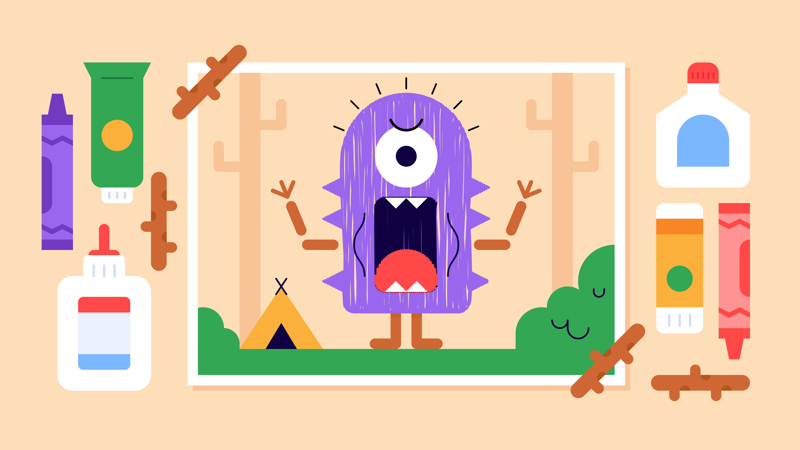
Bark worse than their bite
You’ll need
- Sticky tape
- Glue sticks
- Crayons or pencils
Before you begin
- The person leading the activity could consider planning out a walk around some local woodland. Try to pick a place where there are trees from the ‘Native Scottish trees’ sheet. Make sure that everyone’s comfortable in woodland, and has appropriate clothing and footwear for the walk.
Run the activity
- When you’ve reached the woodland, everyone can walk around as one group and look for the trees listed on the ‘Native Scottish trees’ sheet. The person leading the activity checks that everyone has a copy of the sheet. The pictures on the sheet show the features of each tree that stands out most, so the group should focus on these when they are trying to find one in the wood.
- Everyone takes turns to do a bark-rubbing on a tree of their choice. Use tape to fix a sheet of paper to the trunk of the tree. Gently rub the end of a pencil or crayon over the paper, so that the pattern of the bark is left on the sheet. Some may wish to use different colours.
- The person leading the activity explains to the group that they’ll be using their bark-rubbings to create a bark monster. Each person can get creative and turn their bark-rubbing into a bark monster by imagining up a body shape, choosing features and deciding what their personalities will be like.
- Sit somewhere together and create the bark monsters. Choose whether to draw landscape (for long monsters) or portrait (for tall monsters). Use glue to stick on twigs and leaves. Make sure each bark monster has ears and a mouth.
- Anyone who finishes their bark monster drawing could draw some other items around it. Think about what your bark monster might like to eat or drink, where it might live or hide, and what it likes to do in its spare time.
Reflection
The group have gone out into some woodland and identified some trees that are native to Scotland. Was anyone surprised at how different each tree from the list was? How many of those on the list were you able to find in your wood? Has anyone seen any of the trees anywhere else?
Everyone made bark-rubbings of the trees from the list and turned these into monsters. Which kind of bark made the best monster skin? Did you pick up any twigs or leaves to decorate your monster? Why was it important to make rubbings of the bark and not just take it, and only using the fallen twigs and leaves?
Safety
All activities must be safely managed. You must complete a thorough risk assessment and take appropriate steps to reduce risk. Use the safety checklist to help you plan and risk assess your activity. Always get approval for the activity, and have suitable supervision and an InTouch process.
- Hiking and walking
Follow the guidance for activities in Terrain Zero, or the guidance for each the adventurous activity.
- Outdoor activities
You must have permission to use the location. Always check the weather forecast, and inform parents and carers of any change in venue.
- Gardening and nature
Everyone must wash their hands after the activity has finished. Wear gloves if needed. Explain how to safely use equipment and set clear boundaries so everyone knows what’s allowed.
- Glue and solvents
Always supervise young people appropriately when they’re using glue and solvent products. Make sure there’s plenty of ventilation. Be aware of any medical conditions that could be affected by glue or solvent use and make adjustments as needed.
Take a bark-rubbing from a nearby tree and use this instead of seeking out a tree from the sheet. In diverse woodlands, it may be possible to take multiple rubbings from many different species of tree, which could make for an interesting monster.
Make bark monster creation more challenging by giving the group some more rules to follow. For example, each bark monster must live in the tree that its bark came from, so it will need a treehouse. Also, it only eats fish, so it must live near a source of water like a river.
Pick a route that’s suitable for your group. Make sure anyone with mobility issues is comfortable when on the move and when taking the rubbing.
All Scout activities should be inclusive and accessible.
Create a name for the bark monsters. Try including name of the tree that the bark-rubbing came from in the monster name (eg birch beast, wych-elm witch, pine pixie). Think about how the bark monster might stay hidden from people in the wood and how it might live alongside other bark monsters on other trees.
Make sure young people choose their own trees to take the bark-rubbing from, to show which species of tree they are interested in, and let their creativity show when designing the monsters.

